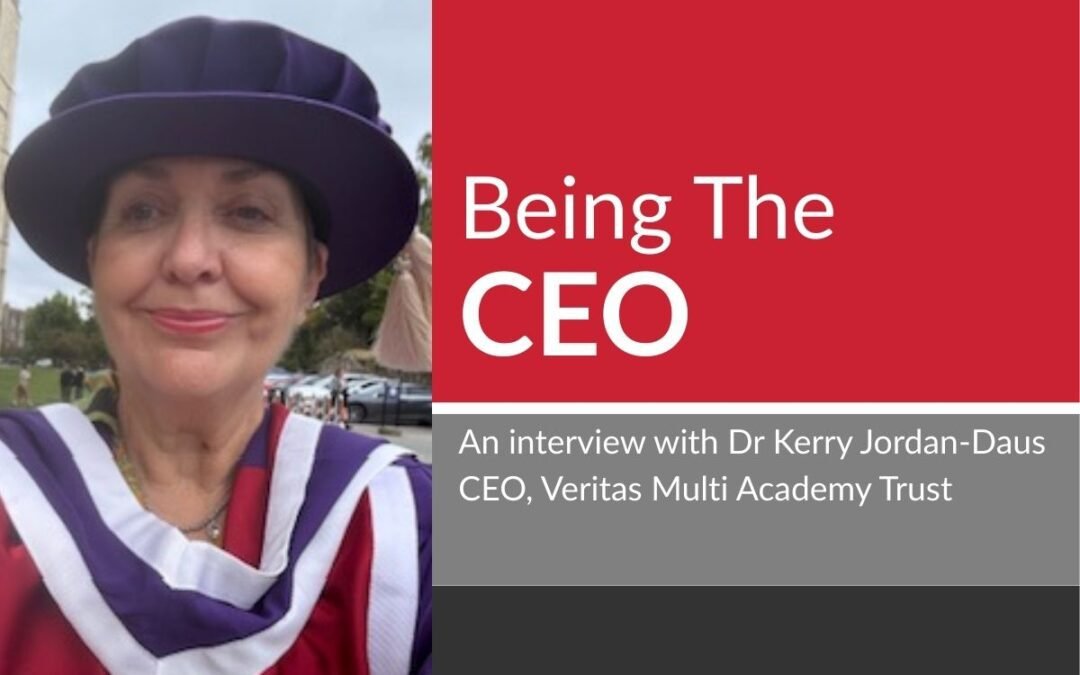Michael Pain
As we say goodbye to 2020 (yet, sadly ,not quite goodbye to the pandemic!) it’s easy to overlook some of the major strategic shifts that have taken place this year. For boards and CEOs of academy trusts the priority, understandably, has been managing the situation safely and effectively. What a challenge it has been and how proud we can be of leaders, teachers, and support staff everywhere. Yet, at the same time, the world has changed beyond recognition in many ways, and some of the changes will be long-lasting and will define our organisations, communities, and young people’s lives for many years to come.
These are my top five strategic shifts from 2020.
1. Technology is now on the agenda, but there’s some profound questions we aren’t asking
We’ve been talking about the influence and use of technology in education for many years now, often with lots of hyperbole but little action or impact. In 2020, we moved from a situation where a few enthusiastic trusts and schools have engaged in technology projects, to one where every school in the land has had to deliver remote learning of the highest quality possible, week in, week out. It’s highlighted how we are still scratching the surface in key areas – most importantly in terms of what works well for pupils, parents and teachers in terms of ease of access and pedagogy. Trusts who are on the case here are not simply listening to gurus and advisers on what is ‘best’, but are relentlessly and continuously asking teachers, parents and pupils what is working for them and what isn’t.
What’s more stark, however, as our general dependence on technology increases, is that we are also still scratching the surface on how we equip and prepare young people to be ‘masters rather than servants’ of technology. Technological use amongst young people is now at an unprecedented level and – despite the education system and schools now adding to this dependence – there is so little discourse or practice around how we ensure children use it wisely in a way that protects their mental health and encourages positive social skills and relationships. This is the biggest blindspot and probably the biggest question for anyone who works with young people now – how do we avoid only some young people becoming masters, whilst others become servants of the tech that dominates all our lives? Self regulation of technology use amongst young people – so that they are healthy, happy learners and citizens – is, for me, the greatest challenge.
The new ‘haves and have nots’ will be reflected in the difference between those young people who can master technology and the online world – using it as a positive force for their creativity and learning; and those young people who are (for want of a better description) the addicts and mere recipients of technology. It’s no exaggeration to say that this difference will define lives and life chances.
2. Trusts and schools are at the heart of their communities
Our #TrustLeaders narrative (written before the pandemic) spoke of the huge potential for all trusts and schools in creating enormous value for young people and staff through partnerships with their communities. This year was a big test of that and so many rose to the challenge. From the trusts and schools that developed PPE for local hospitals to those that created local foodbanks, the positive role of trusts in communities was clear for all. People now understand better what academy trusts are and their place in communities.
Yet this is something as we return to ‘a new normal’ that could be lost. Trusts need to build on this emphasis on community, recognising that relationships with local community leaders, employers, other public bodies and parents is a win-win for all concerned. Before COVID community partnerships were relegated on so many agendas below the accountabilities to governments and its agencies. So, we are encouraging trusts to build upon and solidify their community role by also making themselves accountable to those they serve locally, making clear commitments around what the relationship with the community looks like and what the positive outcomes for young people should be. This ‘pure accountability’ will ensure trusts remain at the heart of their communities whatever happens next, but it will take effort and commitment from boards if it is to happen.
3. Wellbeing is the top priority
There’s nothing like a pandemic to focus our minds on health and wellbeing. Yet, before the pandemic the wellbeing of both young people and education staff was already a serious concern. Now it’s on every agenda item and it must stay that way.
We’ve been pleased to work with the Children’s Society this past term in helping trusts to identify ways in which they can generate goals, commitments and strategies for ensuring wellbeing beyond the pandemic – using tools such as the Children’s Society’s Good Childhood Index. We all know that leaders can’t lead, teachers can’t teach, and pupils can’t learn if their wellbeing is compromised.
As a system we’ve sat on concerning data for too long that has demanded that something needs to be done. I’m heartened that the last nine months have shown how much staff and pupils wellbeing matters to trust leaders, but, again, it depends primarily on boards (with help from government) to ensure this commitment continues as we see a generation exposed to a very serious context around health and wellbeing challenges. Investment in staff and pupil wellbeing strategies may be a cost in this year’s or next year’s budget, but it is a return for many years down the line.
4. It is possible to reform the exam and accountability system
Exams didn’t take place in 2020. League tables didn’t exist. Ofsted was paused. We all survived. I do believe that exams and Ofsted have their place in the system, but it shows that we can refine and reform them, and has there never been a better time to do so as we move into a post-pandemic worked?
These are big challenges. My personal opinion is Ofsted has taken a step in a positive direction under Amanda Spielman, giving trusts and schools a little more freedom to set vision and strategies that meets the needs of their communities. However, it’s still all too high stakes and too much like a big stick for a profession that is in desperate need of a few carrots to sustain itself and rebuild. I think they can rise to this challenge, and not simply go back to business a usual in 2021.
As for league tables, again, my personal opinion is that they pitch schools against one another, develop an unhealthy obsession with the quantitative over the qualitative, and distract too many leaders from listening to the wider expectations of their communities. They are out of step, designed for an era of 1980s ‘management’ culture – obsessed with bigger numbers and rampant competition, and have little to do with strategic leadership.
5. The future has come that bit closer
What do I mean by this rather strange statement? Well, we’ve been told for a number of years now that technology will dominate our lives, that we are entering a fourth industrial revolution, and that climate change is our biggest threat. All three have come into sharp focus this year and go to the very heart of young people’s experience of education and their own life satisfaction.
We have rising numbers of unemployed young people (some who were in school just a couple of years ago) as key industries (retail and manufacturing) look to technology to do the work humans once did. We knew that was coming, just not that a pandemic would bring it closer. When we ask children and young people what their greatest concern is – they say climate change and the future of the planet. And when we look at how young people are socialising, learning, and developing relationships, 2020 has accelerated the dominance of ‘online life’.
Yet trusts and boards can make a start. As organisations across sectors define their ‘carbon zero’ goals, invest in greener energy, and model a social commitment to being more sustainable, young people expect their schools to be leading the way – not following. Again this is a cost in the medium-term, but also a potential return in the longer-term as we approach trickier financial times in a more energy efficient way. And, we also need trusts to help schools make crucial links with new and emerging industries – such as green industries, ensuring the curriculum keeps pace and is informed by those at the cutting edge and pupils are prepared for a new economy. These are all potential strategic win wins.
On each of these issues we need leaders of young people to have an agenda and a strategy, to have a plan, to help them navigate what is an increasingly uncertain world. These are issues we won’t find in a national curriculum or a national strategy. No one has all the answers yet.
So as you move into 2021, I urge you first of all to rest and replenish over the New Year break. I then encourage you to come back – not as simply as leaders of organisations – but first and foremost as the leaders that a generation of young people are looking to for direction and hope. That is going to be demanding but highly worthwhile task for leaders in 2021. Forum Strategy will be there to help you in that task.
See you on the other side.
Michael Pain is the Founder of Forum Strategy and author of Being The CEO.
If you’ve found this article interesting, you may be interested to find out more about our 3 CEO Strategy groups which are open to all our CEO and COO #TrustLeaders members.
CEO Strategy Group 1 – Pupil and Staff Wellbeing


